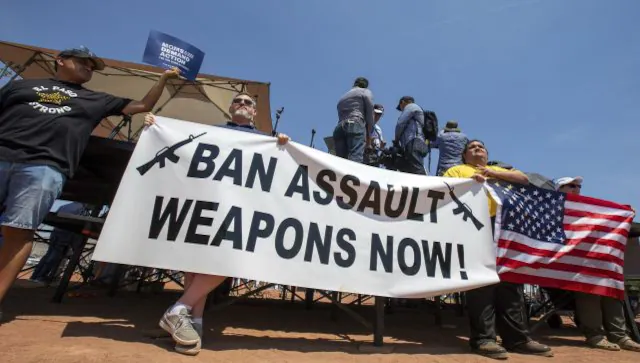High levels of social cohesiveness, low crime rates, and globally high levels of trust and confidence in law enforcement and social institutions appear to minimize gun murder rates.

Following the most recent US mass school shooting in Uvalde, Texas, in which an 18-year-old armed with an assault rifle killed 19 students and two instructors, the US compares children slain by firearms to other nations is intriguing.
According to the Children’s Defense Fund, an independent non-profit organization in the United States, gun violence is currently the most significant cause of mortality among children in the United States. It was stated that nine children are killed by gunshots every day, or once every two hours and 36 minutes. The bulk of these fatalities are of individual children and are linked to ordinary crime and gang violence, with African-American and minority youngsters being disproportionately affected.
Among high-income countries, the United States is an anomaly. According to a study published in the New England Journal of Medicine, the number of children murdered by guns in the United States is 36.5 times greater than in many other high-income nations, including Austria, Australia, Sweden, England, and Wales.
In recent years, worldwide research has decisively shown that higher rates of gun violence are directly related to higher levels of gun ownership.
The Center for American Progress, a Democrat-leaning policy, and research organization conducted an audit of all 50 US states and discovered a strong link between states with the strictest gun regulations and those with the lowest gun crime rates. Meanwhile, worldwide research has examined gun legislation, weapon ownership rates, and gun violence rates.
International levels of gun crime
Surprisingly, European cultures that have gun ownership rates similar to those in the United States (but with hunting rifles and shotguns rather than pistols), such as Finland and Norway, are among the safest societies regarding gun violence.
Researchers distinguish between “civilized” and “de-civilized” gun cultures, those in which gun ownership is linked to traditional norms of respect and responsibility, and those in which gun access predominantly empowers the criminally minded and unstable, contributing to violence and instability.
Gun murder appears to be reduced by high levels of social cohesiveness, low crime rates, and worldwide high levels of trust and confidence in the police and social institutions.
The flip side of this result is that nations with high gun ownership, such as Finland, Sweden, and Switzerland, have a much higher incidence of gun suicide. With some of the strictest gun restrictions globally, the United Kingdom and Japan consistently have the lowest rates of gun homicide, owing to their virtual prohibition of pistols, the criminal weapon of choice. Assault weapons, with their more significant magazines and rapid firing capabilities, have increased the fatality rates in previous US mass shootings.
The influence of society
More significant issues were brought to light as a result of the new worldwide emphasis on gun control research (there was a time when the only academic research on weapons took place in the United States, with a significant portion of it supported, directly and indirectly, by the powerful US lobbying group National Rifle Association), as a consequence of the new international focus on gun control research (there was a time when the only academic research on firearms took place in the United States, and a considerable part of it funded, directly and indirectly, Researchers began to consider circumstances and diverse cultures of gun usage rather than the gun as an independent variable. They also came to recognize, as criminologists have long understood, that enacting new laws seldom, if ever, results in change — criminals continue to flout the law.
Gun experts are increasingly focusing on broader “gun control regimes,” which have a significant role in increasing or decreasing gun violence levels. Policing and criminal justice systems, political accountability systems, social safety nets, comprehensive education provision, and trust and confidence cultures are examples of these regimes.
And as the map above shows, while the United States has the most distinctive gun culture among rich democratic nations, it is dwarfed in mortality rates by many other poorer and more troubled cultures, such as South Africa, Jamaica, and Honduras.
In recent years, attempts in the United States to combat shootings without restricting gun ownership have included increasing monitoring – particularly in schools, where students, parents, and teachers form part of a network keeping an eye on colleagues and pupils. They seek indicators of disaster and can raise the alarm if necessary.
The Violence Project has attempted to construct evidence profiles more ambitiously, drawing on what we already know about mass murderers and forecasting where their behavior, social media activities, and utterances would raise warning flags. However, the data now shows that having more weapons in a country leads to increased gun violence.
The early response to the Ulvade school massacre has focused on limited school security issues and an apparent delay in police engagement, rather than the myriad underlying problems that make the United States such a hazardous environment for children.













